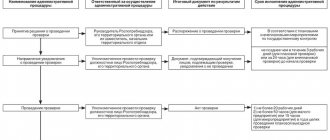Fresh cucumbers on the table on New Year's Eve or in late autumn, grown with your own hands, will cause pride in the gardener and envy in the neighbors. But weather conditions in our country do not allow harvesting in the beds all year round, since this vegetable crop needs warmth and good lighting. Already at a temperature of -1°C it dies, and in the absence of light it bears fruit poorly. Therefore, growing cucumbers in a greenhouse in winter is the only option if you want to eat this vegetable grown without harmful chemicals in winter. It is possible to achieve a good harvest in a winter greenhouse; the process itself is not much different from growing it in open ground. But to avoid mistakes, you need to know the features of the technology.
To maintain an acceptable temperature in the winter greenhouse, it is recommended to add biofuel to the soil before planting cucumbers.
Features of the greenhouse method
Compared to the traditional method, growing cucumbers in a greenhouse as a business has a number of features:
| № | Advantages | Flaws |
| 1 | Constant crop production cycle, independent of weather conditions and season. | To launch the project, large financial investments are required for greenhouse equipment. |
| 2 | Any variety of vegetables can be grown in greenhouse conditions. | Utility costs in the cold season make up a large part of the cost. |
| 3 | Artificial conditions make it possible to harvest a bountiful harvest in a short time. | During the natural ripening season of cucumbers, the market price decreases and competition increases. |
Large-scale agricultural production should be planned near a big city, since small settlements provide summer cottages with fresh vegetables.
How to grow cucumbers in a greenhouse in winter
When it’s snowing and frosty outside, how nice it is to treat yourself to vitamins from your own greenhouse. The method of growing cucumbers in winter is very similar to the summer one, but has its own nuances. To obtain a generous harvest, certain conditions must be met:
- choosing the location and design of the greenhouse;
- soil heating;
- adjustable air humidity;
- artificial lighting;
- fertile light soil.
Greenhouse design
A winter greenhouse must meet 2 requirements: it must transmit light and retain warm air. According to gardeners, the best characteristics are provided by a wall-mounted greenhouse installed on the south side and having double frames and a polycarbonate covering. The base for it is made of pipes or wooden beams. The height should be in the ratio of area and volume - 2:1.
Wall-mounted greenhouse - ideal for a winter greenhouse
The entrance is made in a vestibule, which helps protect the bushes from frosty air. A heating system and water tanks are installed in it.
Heating
Dry climates are contraindicated for cucumbers, so it is not recommended to install oil radiators, metal stoves, and convectors in a greenhouse. The best heating options are presented below.
Water heating system . The soil is heated by buried pipes, and the air is heated by batteries installed around the perimeter.
Networks for heating the greenhouse are carefully hidden under the ground
To heat the coolant, it is better to use a boiler, since it has a longer combustion period and a higher level of automation. The boiler can be any: gas, electric or solid fuel. Power is selected at the rate of kW per 10 m², these parameters are for a building with a height of 2.5 m.
Gas heating . This method is indispensable if the site is gasified. For heating, gas burners or air heaters are used, which are installed around the entire perimeter. Gas equipment emits carbon dioxide, which cucumbers need so much. To ensure even distribution of heat, the greenhouse must have a ventilation system.
When heating a greenhouse using gas boilers or burners, you must follow safety rules
You can also connect to the central heating system, taking into account if the greenhouse is located next to the house.
Greenhouse lighting
In winter there are short daylight hours, and since green plants love a lot of light, it is necessary to install additional lighting in the greenhouse. This can be done using different types of lamps. At the same time, do not forget about color temperature and light level. For good growth, cucumbers need a lot of light, as close as possible to daylight; in other words, lamps must have a color temperature of 5000K. During the growth phase, cucumbers need lamps with a cool color (6500K), and during the period of fruit formation - with a warm color (4000K).
Calculation table for winter greenhouse lighting for cucumbers
The number of lamps also affects good growth and fruiting. The quantity depends on the type of lamp and the size of the greenhouse. You can also use LED lighting designed for growing plants. This lamp has a red-blue spectrum, which has a beneficial effect on development and increases productivity.
When installing such lighting in a greenhouse, you cannot work for a long time, since the light has a detrimental effect on vision.
LED lighting will help increase harvest
Preparing the beds
Cucumbers prefer nutritious, light and moist soil. For a good harvest, the soil needs to be heated with cables, pipes, or “warm beds” made. The soil for the beds should be loose and nutritious
Particular attention to soil quality
Heating with cable
For heating, a cable with polypropylene insulation is used. In order to keep the soil temperature in the garden bed warm, it is necessary to lay a 75/100W cable per 1 m². It all depends on the climate and time of planting cucumbers. The optimal temperature for the growth and fruiting of cucumbers should be from +15°C to +25°C.
The linear power of the cable for a home greenhouse should not exceed 10 W 1 m²
Heating with pipes
The pipes are laid under the beds so that the soil layer above them is at least 25 cm. It is best to use metal pipes with a diameter of 75 to 150 cm in diameter. To completely warm the soil, it is better to use pipes of smaller diameter.
We choose pipes of small diameter
Warm beds
Warm beds are made from biodegradable organic matter: branches, leaves, straw, grass. In order for the bed to be effective, it must be filled with substrate layer by layer:
- Dry leaves, branches and all biological debris are placed on the bottom.
- The second layer is compost.
- On top is nutritious soil.
Raised beds are best. This design will give the roots warmth, which will lead to good development of cucumbers.
Warm beds perform two functions: heating and additional fertilizing.
How to make a warm bed (video):
Watering rules
The soil must be constantly moist. The best way to maintain soil moisture in heated greenhouses is through drip or bush irrigation. The water should be warm, soft and settled. To reduce the frequency of watering, it is better to mulch the soil with straw or sawdust. Adding mullein or bird droppings to the water will solve two problems at once: the water will become softer, and the cucumbers will not need feeding.
Pest and disease control
Most often, when growing cucumbers in a greenhouse, if not properly cared for, the plant can be susceptible to certain diseases.
Root rot . This disease affects a weakened plant. Symptoms of the disease: the root collar becomes brown, the plant stops growing, the stem becomes thinner, and young leaves wither. Treatment consists of treating the bush with biological products.
White rot . The most common disease that affects all parts of the plant. The disease can be recognized by the presence of a snow-white fluffy coating. The fungus releases substances that have a detrimental effect on the cucumber crop. To preserve the bush, it is necessary to inspect it in a timely manner and remove damaged leaves, shoots or the plant itself.
Gray rot . Appears in the form of dark spots. The fungus attacks the leaf axil, flowers and fruits. Treatment is the same as for white rot disease, but in addition, the plant is sprinkled with copper-chalk powder at the initial stage of the disease.
It is better to prevent a disease than to treat it
Business plan
To organize your own farming business, you need to draw up a business plan for growing cucumbers:
- Studying technology.
- Site selection and greenhouse placement.
- Equipment supply.
- Purchase of seedlings.
- Registration of an enterprise.
- Sales organization.
- Financial calculations.
Step-by-step planning allows you to avoid mistakes and unnecessary costs. You can download a ready-made business plan with calculations using the link.
How to achieve high yields
Achieving high yields is actually not difficult at all. The whole secret lies in the use of a three-rotation technique for growing cucumbers, where one harvest occurs in the summer, and two harvests in the spring-winter-autumn months. The key point of this business idea lies precisely in the summer harvest. It is during this period that you can do without heating and lighting. Consequently, the cost of production will be much lower. The income received from this harvest will 100% cover future expenses in the autumn-winter period.
Cucumber growing technology
Successful cultivation of cucumbers is based on 3 basic principles:
- Selecting suitable varieties. For closed ground conditions, hybrid varieties that do not require pollination are best suited. To increase productivity, you need to choose vegetables with a short ripening period, a large amount of ovary, and high resistance to diseases and pests. In large areas it is convenient to plant cucumbers of different types - salad, pickles, for canning. Seeds for planting are purchased from seed farms, where they guarantee quality material and provide advice on growing vegetables. The most popular varieties are Nezhinsky, Emelya, Hercules, Dynamite, Santana, Kapelka. Experienced vegetable growers advise giving preference to domestic varieties.
- Delivery of quality soil. Cucumbers produce a rich harvest in fertile black soil, which needs to be fertilized. If the land on the site is not very good, you will have to purchase it. There are alternative options: lumpy turf, which is prepared in advance for sowing; hydroponics - more often used by large farms; a mixture of turf and peat, into which fertilizers, sawdust, husks, and straw are added.
- Care and creation of a microclimate in a greenhouse. The optimal temperature for ripening vegetables is 20-25°C with a humidity of 80%, since cucumber is a very moisture-loving plant. Watering is carried out with warm water through a drip system. Every week the soil is loosened and fertilized with superphosphate, potassium chloride, and ammonium nitrate. In summer, it is necessary to protect seedlings from the scorching sun, and in winter, heat the premises. Cucumbers are grown on vertical vines, which are shaped in such a way as not to block the light and produce maximum yield. Some varieties need to be pinched and pinched, some not. To prevent the death of plants from diseases and pests, it is necessary to carry out regular inspections and treatment with special means.
- Typically, a three-rotation method is used to grow cucumbers all year round - the cycle begins in early spring, one crop is harvested in the summer and two in the rest of the year. In the warm months, a “financial cushion” is created to pay for electricity during the cold season.
Cucumber varieties for a heated greenhouse
In order to enjoy gherkins all winter, one greenhouse will not be enough. Choosing a variety is the main step in obtaining a vitamin delicacy. Suitable for planting in a greenhouse:
- self-pollinating varieties;
- unpretentious and disease resistant;
- shade-tolerant varieties.
If the selected variety is not self-pollinating, then artificial pollination will have to be carried out.
These include the following varieties.
Cupid . An early ripening hybrid that tolerates sudden changes in weather well. The fruits are formed 40 days after sowing.
Arina. One of the highest yielding varieties. The hybrid is cold-resistant and is used in salad preparation.
Moscow Nights. An early ripening variety that grows well both in the shade and in the sun. The hybrid withstands diseases such as powdery mildew and olive spot.
Construction of a greenhouse
A cucumber growing business can be organized on your own personal plot or you can rent land for these purposes. The location for agriculture is chosen as far as possible from the industrial zone. Although this will increase transportation costs, the vegetables will grow in clean air and will not cause illness to consumers.
It is advisable that the greenhouse be installed on a flat area, without slopes or uneven areas. You can start with one greenhouse, and then add more structures. On an area of 35 sq. m., equipped with modern equipment, harvest up to 100 tons per year.
You can build a greenhouse yourself or purchase a ready-made structure made of light metal and polycarbonate. For regions with different weather and climatic conditions, various types of greenhouses are produced:
- In the south, it is convenient to use a structure with a gable roof and a large number of opening windows to ventilate the room on warm winter days.
- In areas with a more severe climate, greenhouses are built with a domed roof and a vestibule that serves as an air partition and a warehouse for equipment.
Large greenhouses are the most economical to use, although they are more expensive to build. When working in several greenhouses, it is necessary to purchase a separate set of equipment for heating, lighting and watering. And for one large area, one boiler and humidification system are enough. In addition, the large surface area allows a lot of light to pass through, which saves energy costs.
Establishing product sales channels
The main distribution channels include:
- Grocery stores;
- Vegetable markets;
- Wholesale bases;
- Intermediaries between grocery stores and wholesale centers;
- Direct sales from the place of production.
Each of the listed distribution channels has a number of advantages and disadvantages regarding the final cost, volumes sold, etc. It is recommended to establish a stable sales network in advance in order to avoid losses from overproduction in the future.
Equipment
For year-round cultivation of cucumbers, the greenhouse is equipped with heating, watering and additional lighting systems. Moreover, it is necessary to heat not only the air, but also the soil.
Heating is mainly installed from a boiler and water pipes connected to it, located throughout the entire area of the greenhouse. The boiler runs on solid, liquid or gas fuel, and can be universal. Heating of the soil is provided by the “warm floor” technological method, which is safe and reliable for plant growth.
Plants need additional lighting in winter. For these purposes, phytolamps and LED lamps are used, which sufficiently replace sunlight, are durable, and do not consume a lot of electricity.
Cucumbers are composed mainly of water and desperately need plenty of watering. High humidity is qualitatively maintained by automated drip irrigation systems, consisting of a water tank, hoses and a liquid supply control device. Fertilizers and minerals are added to the irrigation system to increase productivity.
Growing cucumbers requires equipment and other materials for forming vines, caring for plants, and harvesting.
Preparatory stage
To grow cucumbers in a greenhouse in winter, you need to choose the right variety . The process of preparing soil and seed material is of no small importance. The quality and quantity of the harvest directly depends on this.
Variety selection
For a winter greenhouse, varieties that are resistant to lack of light, low temperatures, do not require pollination, and are high-yielding are suitable. For these purposes, unpretentious early ripening parthenocarpic hybrids or special varieties for greenhouses :
- hybrids are crops bred by crossing two parental varieties: their name on the package with seeds contains the inscription F1 - these are April, Anyuta, Calendar, Zozulya, Lukhovitsky, Liliput, Makhaon, Dynamite and others;
- varieties resistant to light deficiency - Relay, Rossiysky, Regatta, Iva, Domashny, Marfinsky;
- unpretentious crops - Moscow greenhouse, Surprise, Grenade, Zarya.
Non-self-pollinating varieties require artificial pollination during the flowering period.
Soil preparation
The soil is enriched with organic and mineral fertilizers . When preparing the soil in new greenhouses, manure, potassium sulfate and superphosphate are added to the soil.
The finished substrate is infused for two weeks . Before planting plants in a permanent place, ammonium nitrate is added to the soil during loosening. To improve the quality of the soil, this event is carried out annually.
Interesting. California worms are capable of converting soil into vermicompost.
Seed preparation
To calibrate, they are placed in a saline solution for 15-20 minutes (1 teaspoon of salt per 1 glass). The seeds that float to the surface are removed - they will not sprout. The seeds that have fallen to the bottom are washed and dried.
Next, disinfection is carried out . The seeds are placed for 20-30 minutes in a 1% solution of potassium permanganate or 3% hydrogen peroxide, then washed. The procedure is carried out to increase the culture’s immunity to infectious diseases.
To harden the seeds, they are wrapped in damp cotton cloth, placed on a saucer and placed on the bottom shelf of the refrigerator for two days. Recommended temperature – from 0 to +2°С. This procedure is carried out to accelerate the emergence of seedlings and activate the immune system.
To stimulate culture growth, special preparations are used, for example, Zircon or Epin. The traditional method is also used: seeds are placed on an aloe leaf cut lengthwise overnight and planted in the morning without washing.
Seedling
Seedlings for growing cucumbers can be purchased or grown on your own farm. Self-cultivation occurs as follows:
- Seeds are sown in containers with a diameter of about 8 cm.
- For two to three days, the room with future seedlings is maintained at a temperature of 25-30°C and a humidity of 75%.
- Watering is carried out daily with warm water.
- For the first two weeks, fertilizing and fertilizers are applied to the soil in accordance with the sown variety.
- When the seedlings have 4-6 leaves (usually this takes a month), they are planted in the beds.
High-quality seedlings are sold to other farms, which provides additional income to the cucumber farm.
Profitable business all year round
Cultivation of the product is carried out in several ways:
- Rassadny.
- Seeds.
For planting you will need:
- A container with peat, since the soil must be fertilized.
- Ready seeds.
Seeds ready for planting are placed in peat cups. If all the conditions for plant growth are taken into account, the seeds will not have to wait long and will germinate within 4–5 days. Fertilizer must be applied when the seedling leaves appear and a few days before direct transplantation into the ground. The procedure for transplanting seedlings should be done after 2-3 leaves appear. In this case, you should remember about the temperature regime. The temperature at the time of transplantation should not exceed 18 degrees during the day, and 15 at night. Special attention should also be paid to the soil temperature. It must be heated evenly, otherwise it will negatively affect the development of the plant. While the seedlings are not yet strong, it is worth paying attention to nutrition, irrigation and lightening. To moisturize, use warm water.
Business registration
A cucumber business can be registered in several ways:
- Personal subsidiary farming, which, according to the law, is not an enterprise and is not subject to taxes. This option is suitable for owners or tenants of agricultural land with an area of up to 2.5 hectares. The registration of private household plots is carried out by local government bodies, for which a certificate is issued indicating the type of products produced. In this case, the sale of vegetables is possible only to end consumers in markets or small retail outlets.
- It makes sense for the owner of a large farm to register an individual entrepreneurship in order to sell a large harvest through a retail chain. Individual entrepreneurs have the right to hire workers, have no restrictions on land area and can pay a single agricultural tax at a rate of 6%.
- A peasant farm is a legal entity and is registered if a family or several partners participate in the activity. The state provides peasant farms with benefits for renting land and the opportunity to pay the Unified Agricultural Tax.
Growing cucumbers is not a licensed activity; when exporting products outside the region, it is necessary to undergo certification and issue a declaration of conformity.
How much money do you need to invest to create a greenhouse?
Greenhouse farming, like any other business, requires capital investment. The purchase of greenhouses, the necessary equipment, as well as their installation on a plot of land with a total area of at least 500 m² will require approximately one and a half million rubles.
Initial investment:
- Components for the construction of greenhouses – 650,000 rubles;
- Equipment for heating the soil – 120,000 rubles;
- Heating boilers – 70,000 rubles;
- Automatic watering system – 30,000 rubles;
- LED lamps – 550,000 rubles;
- Transport costs – 50,000 rubles;
- Other expenses (seeds, fertilizer, electrical wiring, pipes) – 150,000 rubles.
Total – 1,620,000 rubles.
Annual expenses:
- Fuel – 150,000 rubles;
- Purchase of seeds – 17,000 rubles;
- Payment for electricity – 16,000 rubles;
- Fertilizer – 20,000 rubles.
Total – 203,000 rubles.
Sales organization
As greenhouse products mature, they are collected and placed in wooden, plastic or cardboard boxes. Cucumbers have a dense structure, are stored for a long time and tolerate transportation well.
Harvest sales depend on volumes:
- in markets;
- through the retail network;
- through the wholesale network;
- to catering establishments, hospitals, schools.
Individual entrepreneurs and peasant farms enter into agreements with legal entities, private farmers sell cucumbers to end consumers.
An established and well-organized sales network guarantees the sale of the entire harvest. To do this, you need to study the level of prices, demand, delivery conditions and trading fees in advance.
Individual entrepreneurship
If you are planning to create a large retail distribution network, then we will be talking about a fairly impressive volume of agricultural products. In this case, the optimal solution would be to register an individual business. As mentioned above, the Russian consumer prefers domestically produced products, and to confirm their origin they need a certificate, declaration of conformity and a sticker on the packaging. Such documents are issued only to legal entities or individual entrepreneurs.
Economic calculations
How beneficial and profitable the business idea of growing cucumbers in a greenhouse is can be assessed by calculating the starting investments, expenses and planned income.
The farm has an area of 400 sq. m. on your own site you need to invest:
| № | expenditures | Amount, rub. |
| 1 | Construction of a greenhouse | 640 000 |
| 2 | Equipping with heating, lighting and irrigation systems | 800 000 |
| 3 | Purchase of planting material, soil and fertilizers | 100 000 |
| 4 | Fare | 60 000 |
| 5 | Other costs | 50 000 |
| Total | 1 650 000 | |
Operating expenses for the year are:
| № | expenditures | Amount, rub. |
| 1 | Heating | 145 000 |
| 2 | Electricity | 96 000 |
| 3 | Seeds | 25 000 |
| 4 | Fertilizers | 100 000 |
| 5 | Sales | 300 000 |
| 6 | Other costs | 240 000 |
| Total | 906 000 | |
Market prices for cucumbers vary depending on the season: in summer there is mass trade and the price is low, in winter and spring fresh vegetables become 3-4 times more expensive. On average, a kilogram of cucumbers costs 80 rubles. An annual harvest of 37 tons brings the farmer:
| № | Name | price, rub. | Harvest, t | Income, rub. |
| 1 | Sales of cucumbers | 80 | 37 | 2 960 000 |
Profit will be: RUB 2,960,000. — 906,000 rub. = 2,054,000 rub. This amount covers the initial investment in the business, and the entrepreneur’s net income in the first year of operation is 404,000 rubles.
Video: rural business - cucumber millionaire from Arsky district.
Arrangement of beds
So, when preparing the soil for winter use, first of all, remove the top layer (10-15 cm) and replace it with fresh one. The soil mixture can be prepared using forest soil instead of garden soil, and humus can be replaced with turf soil.
In areas rich in peat bogs, when preparing the mixture, peat is used, of course, and garden soil and humus are added. Any of the prepared soils must be mixed well and the beds filled with them.
Watering mode
If you notice that the leaves begin to wither, this means that there is insufficient air humidity in the room. In such cases, it is recommended to irrigate using the sprinkling method and additionally irrigate the bushes with special sprayers. If it happens that the roots of the plants are visible above the soil surface, then hilling should be carried out. It is preferable to water in the morning and evening, because in the daytime, when the sun is very hot through the glass, you can burn the plants. This article will tell you how to water cucumbers correctly.
Yellowing of cucumber leaves in a greenhouse indicates insufficient air humidity
Top dressing
The next stage will be fertilization and disinfection. To fertilize the soil in greenhouses, mineral fertilizers such as nitrophoska and kemira are used. They are applied at the rate of 40-50 g per square meter, and then they must be dug to a depth of 25-30 cm. 7-9 days before sowing seeds or planting ready-made cucumber seedlings, biological products (like Baikal M1) are added to the soil at the rate of 100 ml of the drug for 1 liter of water.
To obtain a large yield, add mineral and organic fertilizers to the soil
The beneficial microorganisms of this preparation have a detrimental effect on the negative microflora of the soil and at the same time saturate it with beneficial ones.
Disease Prevention
Due to fluctuations in humidity in the greenhouse, favorable conditions arise for the development of pathogens. In this regard, it is necessary to choose varieties that are resistant to fungal rot and various types of infections.
Garter
To prevent high planting density, it is necessary to mold the plants. Hybrid varieties with limited branching can significantly facilitate this task. They produce almost no side branches at all, which means that all the growth force is directed to the development of the main stem. Therefore, they practically do not need to be molded; it is enough to just tie them vertically to the supports. Read how to properly tie cucumbers in greenhouses here. The best seeds for growing cucumbers in a greenhouse in winter. The following varieties and hybrids can be included (F-1 marking of hybrids): “Moscow Nights F1”, Ladoga F1, Northern Lights F1, Phoenix Plus, Olympics F1, Amur F1, Cheetah F1, Dynamit F1 and varieties Russian, Domashny, Marfinsky, Willow, Relay race.
Guarantees and risks
Factors that could jeopardize your earnings:
- breakdown of greenhouse equipment;
- low yield due to erroneous choice of varieties, poor quality of seedlings, non-compliance with growing conditions;
- high competition in the industry;
- poorly organized sales of products.
Guarantees - high customer demand. If you do not sell all your products fresh, they will readily buy them salted or pickled as preserves. Delicious chemical-free cucumbers are readily sold out in the greenhouse complex itself.
Your task is to develop the technology, establish sales, and make a name for yourself. Once you have recouped your initial investment, look to expand your production.
Inspiring video about a millionaire farmer who chose the cucumber business:
Financial calculations
Investments in the project at the initial stage
Initial expenses:
- construction of a greenhouse – 300 thousand rubles;
- purchase of equipment – 150 thousand rubles;
- purchase of soil, fertilizers and seeds – 80 thousand rubles;
- purchase of agricultural equipment – 5 thousand rubles;
- payment of state duty - 800 rubles.
Current expenses
Monthly expenses:
- payment for electricity – 8 thousand rubles;
- payment for water – 10 thousand rubles;
- heating – 15 thousand rubles;
- taxes.
Income from the sale of cucumbers, calculation of profit and profitability
The greenhouse is open all year round. The average annual cost of 1 kg of cucumbers is 60 rubles.
One greenhouse with an area of 200 sq. m. allows you to grow up to 17 tons of cucumbers per year.
The annual income of the greenhouse is 1.02 million rubles. This means that the greenhouse will pay for itself within six months of operation. Earnings for the first year of work are 450 thousand rubles. Taxes and utility costs are subtracted from this amount. Net income from one greenhouse is 300 thousand rubles.
The greenhouse business is always relevant. There is demand for agricultural products all year round. This allows an entrepreneur to build a profitable business with minimal risks, because modern seed selection allows for large harvests from small areas. In addition, selected varieties of cucumbers adapt to difficult climatic conditions and can germinate on different soils.










